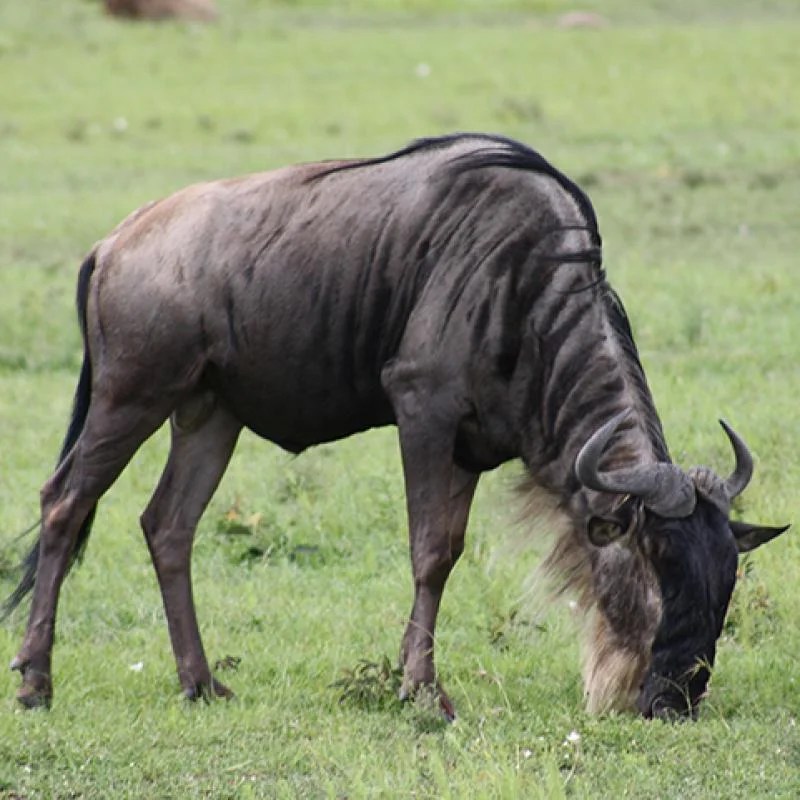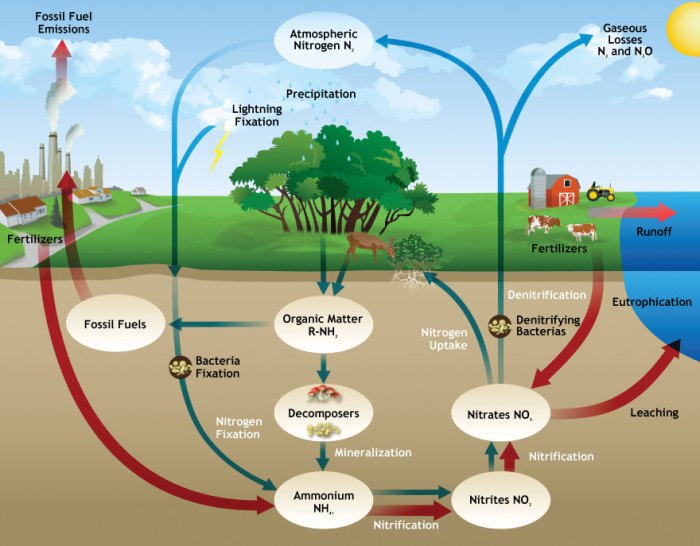Nutrient cycling in the Serengeti is a complex and dynamic process that plays a crucial role in maintaining the delicate balance of this iconic ecosystem. From the vast grasslands to the acacia woodlands, the cycling of nutrients ensures the availability of essential elements for plant growth, animal survival, and the overall health of the Serengeti.
Nutrient inputs from external sources, such as rainfall and atmospheric deposition, are balanced by nutrient outputs through various pathways, including leaching and erosion. Decomposers, such as bacteria and fungi, break down organic matter, releasing nutrients back into the soil. Herbivores, like wildebeest and zebras, contribute to nutrient cycling through grazing and browsing, while predators, such as lions and leopards, play a vital role by controlling herbivore populations and preventing overgrazing.
Nutrient Cycling in the Serengeti Ecosystem

Nutrient cycling is a fundamental process that ensures the continuous availability of essential elements within an ecosystem. In the Serengeti ecosystem, nutrient cycling plays a crucial role in maintaining the delicate balance between different species and the overall health of the ecosystem.
Decomposers, such as bacteria and fungi, are the primary agents of nutrient cycling. They break down dead plant and animal matter, releasing nutrients back into the soil. These nutrients are then available for uptake by plants, which are consumed by herbivores and predators, completing the nutrient cycle.
Nutrient Inputs and Outputs
The Serengeti ecosystem receives nutrient inputs from various sources, including:
- Atmospheric deposition: Nutrients are deposited from the atmosphere through rain and dust.
- Biological fixation: Certain bacteria and plants can convert atmospheric nitrogen into a usable form.
- Migration: Herbivores migrating into the Serengeti from surrounding areas bring in nutrients.
Nutrient loss occurs through several processes:
- Leaching: Nutrients are dissolved in water and carried away by rainfall.
- Erosion: Soil erosion can remove nutrients from the ecosystem.
- Harvesting: Humans and other animals harvest plants and animals, removing nutrients from the system.
The Role of Herbivores and Predators, Nutrient cycling in the serengeti
Herbivores play a significant role in nutrient cycling through grazing and browsing. By consuming plants, they release nutrients back into the soil through their waste products.
Predators, such as lions and leopards, contribute to nutrient cycling by controlling herbivore populations. By limiting the number of herbivores, predators prevent overgrazing and ensure a balanced ecosystem.
Nutrient Hotspots and Coldspots
Nutrient hotspots are areas with high nutrient concentrations, often associated with water sources or areas of high animal activity. Nutrient coldspots are areas with low nutrient availability.
The distribution of nutrient hotspots and coldspots is influenced by factors such as:
- Soil type
- Water availability
- Animal activity
- Vegetation cover
Impacts of Human Activities on Nutrient Cycling
Human activities can significantly impact nutrient cycling in the Serengeti ecosystem.
- Agriculture: Conversion of natural habitats to agricultural land can lead to nutrient loss through soil erosion and leaching.
- Tourism: Increased tourism can result in nutrient enrichment due to waste disposal and trampling.
To mitigate these impacts, measures such as sustainable land management practices and responsible tourism practices are essential.
Answers to Common Questions: Nutrient Cycling In The Serengeti
What are the major sources of nutrient inputs into the Serengeti ecosystem?
Rainfall, atmospheric deposition, and migration of animals.
How do herbivores contribute to nutrient cycling?
Through grazing and browsing, herbivores break down plant matter, releasing nutrients into the soil.
What is the role of predators in nutrient cycling?
Predators control herbivore populations, preventing overgrazing and ensuring a balanced nutrient cycle.
